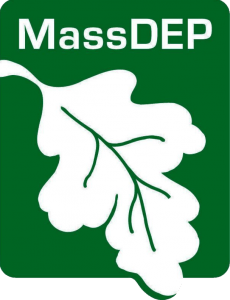Massachusetts Department of Environmental Protection & Town of Leicester: Water Management In Leicester
| Sponsors | Student Researchers | Goals & Objectives | Executive Summary | Final Report and Video |
Welcome to our project page! During our interactive qualifying project we collaborated with the Massachusetts Department of Environmental Protection (MassDEP) and the Town of Leicester to provide a cost-benefit analysis on potential improvements to the Town of Leicester’s three separate water management systems. We looked to improve the town’s water quality and quantity to provide a basis for economic growth and protect public health.
Project Sponsor: Massachusetts Department of Environmental Protection
The mission of the MassDEP is to regulate the discharge of wastewater from treatment plants along with industrial facilities and to ensure the quality and reliability of potable water.
Project Sponsor: Town of Leicester
The Town of Leicester is located in central Massachusetts, 46 miles from Boston. As of 2010, Leicester has a population of approximately 11,000 people. The majority of residents commute to other towns for work, but there are over 300 businesses, including farms, recreation, and professional service businesses, located in Leicester. Most of Leicester’s 23.36 square miles is open land, providing the town the opportunity to expand through smart-growth projects.
Student Researchers
Our project team consists of:
- Timothy Berube
- James Chow
- Anna Franciosa
- Aditya Nivarthi
Goals & Objectives
Goal: Identify the challenges Leicester’s three water districts are facing and provide cost-benefit analysis for available improvements in order to meet the water quality standards and water demand in Leicester.
Objectives:
1. Gather information on the current and projected water demands of residents in Leicester.
2. Identify the water districts’ challenges in meeting regulation requirements.
3. Using GIS, generate a map of the Town of Leicester with geographic water management system attributes.
4. Identify potential improvements to improve Leicester’s water management system.
5. Develop comparative analysis of proposed improvements based on gathered data.




